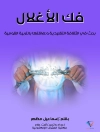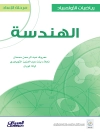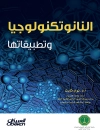Critical race theory (CRT) was introduced in 1995 and for almost twenty years, the theory has been used as a tool to examine People of Color’s experiences with racism in higher education. This monograph reviews the critical race literature with a focus on race and racism’s continued role and presence in higher education, including:
* legal studies and history,
* methodology and student development theory,
* the use of storytelling and counterstories, and
* the types of and research on microaggressions.
The goal of the editors is to illuminate CRT as a theoretical framework, analytical tool, and research methodology in higher education. As part of critical race theory, scholars and educators are called upon to extend their commitment to social justice and to the eradication of racism and other forms of oppression.
This is the 3rd issue of the 41st volume of the Jossey-Bass series ASHE Higher Education Report. Each monograph is the definitive analysis of a tough higher education issue, based on thorough research of pertinent literature and institutional experiences. Topics are identified by a national survey. Noted practitioners and scholars are then commissioned to write the reports, with experts providing critical reviews of each manuscript before publication.
Table des matières
Executive Summary vii
Foreword x
Acknowledgments xiii
Critical Race Theory 1
Critical Race Theory in Higher Education 3
Critical Legal Studies 3
The Origins of Critical Race Theory 4
Critical Race Theory 5
Key Tenets of Critical Race Theory 5
Critical Race Theory in Higher Education: 20 Years of Theoretical and Research Innovations 14
Critical Race Theory in Higher Education 16
Tensions and Possibilities 16
Race and Racism on the U.S. University Campus 18
Engaging with Students of Color’s Experiences 20
Understanding Faculty of Color’s Experiences 24
Critical Race Theory, Higher Education Policy, and the Law 30
Conclusion 32
Critical Race as a Methodology 34
A Critical Race Methodology 35
Elements of a Critical Race Methodology 35
Providing Voice and Legitimizing People of Color’s Experiences 36
Master Narrative/Majoritarian Stories 37
Storytelling 38
Counterstories 39
Functions of the Counterstory 39
Types of Counterstories 40
Descendant Theories of Critical Race Theory 41
Growing the Counterstory? 46
Positionality 52
Conclusion 55
Critical Race Theory as a (Student) Development Theory 57
Centering Race in Student Development 58
Critical Race Theory and Intersectionality 62
Critical Race Theory and Campus Environments 64
The Ecological Perspective of Campus Space 65
Impact to Student Development 67
Toward a Critical Race Theory of (Student) Leadership 68
Conclusion: The Educator as Architect 70
Racial Microaggressions 72
Racial Microaggressions in Scholarship 73
Contextualizing Microaggressions 74
Types of Microaggressions 76
Research on Microaggressions 78
Microaggressions and Critical Race Theory 79
Decolonizing Microaggressions: A Concluding Thought 81
Critical Race Theory and the Next 20 Years 84
Reflexivity and Listening 86
Call to Praxis 87
Glossary 89
Notes 98
References 99
Name Index 110
Subject Index 114
About the Authors 117
A propos de l’auteur
Dorian L. Mc Coy is an assistant professor of higher education in the Department of Educational Leadership and Policy Studies at the University of Tennessee, Knoxville.
Dirk J. Rodricks is a doctoral student in Critical Studies in Curriculum and Pedagogy at the Ontario Institute for Studies in Education (OISE) of the University of Toronto.












